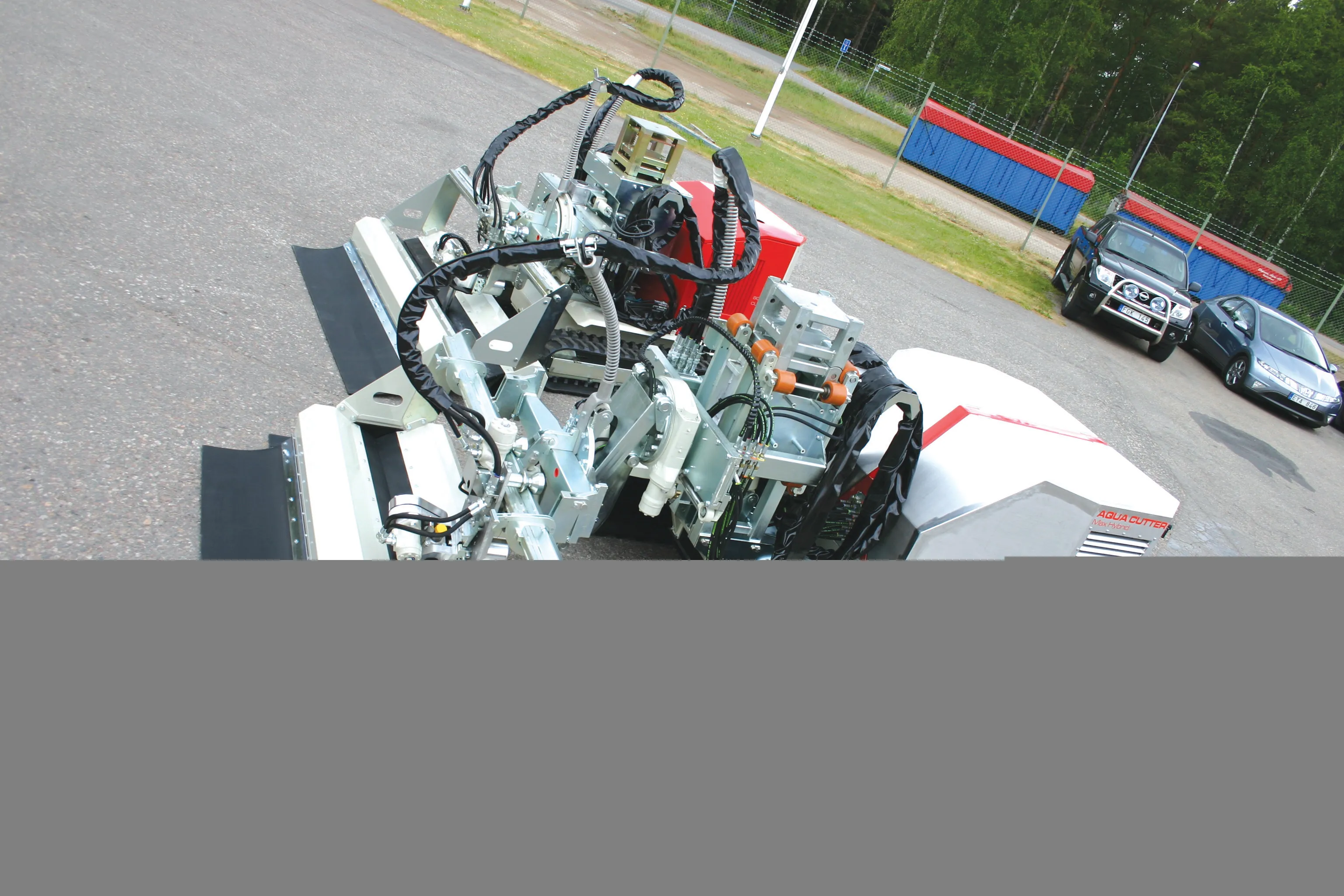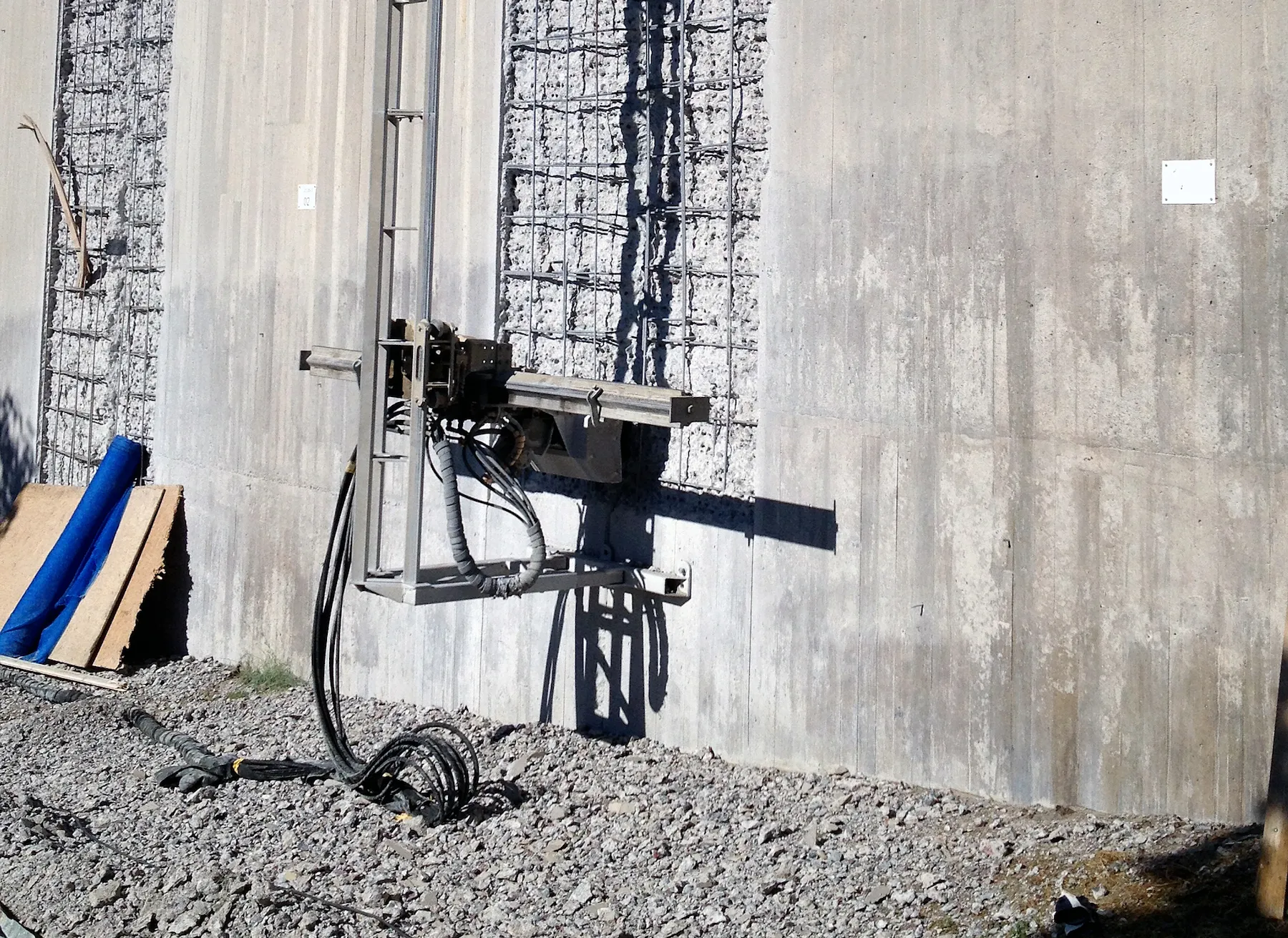Aquajet Systems says that its latest hydrodemolition robot offers greater versatility due to its dual-power feature. The machine can be switched easily between diesel and electric drive, with the latter option suiting use in built-up urban areas or enclosed workzones.
February 24, 2012
Read time: 2 mins

The machine is available with an optional extended mast height of up to 9m, is 20% larger than conventional models and offers larger, adjustable tracks to provide a variable width of between
1.5-2m for increased stability. A new type of steering drive allows the user to turn and twist the powerhead for improved precision. Aquajet has developed a multi-axis system allowing the powerhead to be moved quickly, allowing it to work on vertical, curved or horizontal surfaces. The system can turn the powerhead 180º in the horizontal position.
The robot can turn through 90º travelling along the wall surface and along with the side movement of the powerhead, this eliminates stop-start turning of the robot. The units can operate vertically, horizontally and overhead as standard, while attachments allow removal in specialist situations, such as underneath bridge decks. The new machine is equipped with an automated control that optimises settings, applies the minimal force required and allows the robot to operate selectively, with the jet of water penetrating into the weak concrete as these pass across the surface. An innovative sensing control system and a patented high-pressure lance control further boost efficiency and performance.







